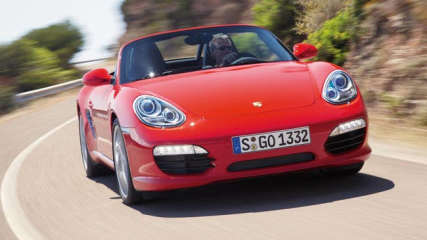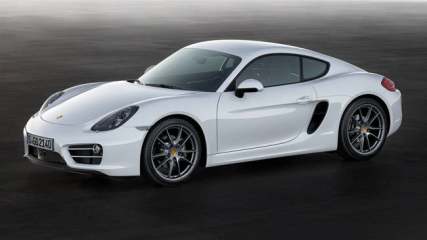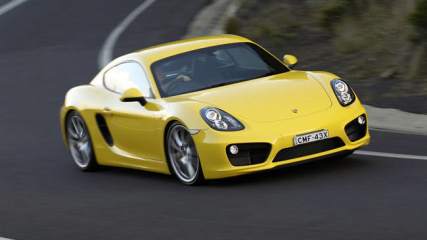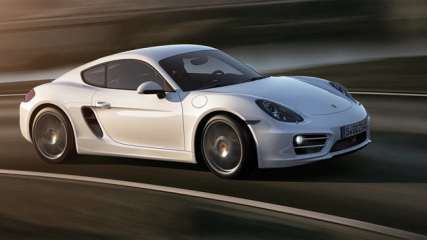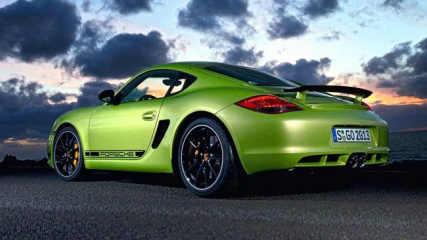Porsche Cayman PDK 2013 review
By Paul Pottinger · 15 Feb 2013
So why does Porsche charge more for the Cayman coupe than its roadster sibling the Boxster?Drop tops cost more to make, what with all the stabilising reinforcement needed to compensate for the lack of a rigid roof. So it must be a calculated marketing driven thing, right? Can't have the junior coupe priced too far under the perennial 911.But while there's no such thing as a willingly downsizing 911 owner, the most affordable new Cayman is $115,500. The most affordable 911 is almost exactly double. Sorry, but the 911 isn't anywhere near twice as good as the Cayman Carsguide has driven in Portugal ahead of its April 27 release here.Against that, the impost over the Boxster is now some $8K in base form and some $17k for the ripping S. So why does Porsche charge more for the Cayman? Well, mainly because they're Porsche and they can. Also because if the Cayman is not the best Porsche in outright terms, it is the best pound for pound.VALUENow that the Cayman, like the Boxster, has something like 50 per cent commonality with the fabled 911 and is, as we say, rather more than half the car, you'd have to say the value is fairly sensational.That's even if you - like more than 90 per cent of buyers - accept the premium for the exceptional PDK twin clutch auto transmission. So realistically the range kicks off at $120,800 for the Cayman PDK with the 2.7 six cylinder engine - a $400 increase on the previous model. But then the S slithers into the equation, at $2900 over the previous model.A six speed manual - not a seven like the 911 - is $150,400 with $155,700 for the range topping auto. That's some $17,000 above the equivalent Boxsters, in which you can convert from topless to soft top up in a matter of seconds at the push of a button. To justify (sort of) that impost, the Cayman gets more power and bi xenon headlights as standard. Also non optional are 17-inch alloys on the base car and 20s on the S.Although packages are being finalised, including Sports Chrono, it will be possible to option the S up to $200,000, at which point you're within tens of dollars of a base 911's lease repayments. Which is Porsche's point in this positioning.Among the excellent, diverse but not really comparable cars in the Cayman's price range are BMW's M3, Audi's top TT and Benz's SLK.TECHNOLOGYElectrical steering is the most obvious and important piece of tech devolved from the 911. Some can bore for their countries on the verities of the classic hydraulic steering, but as Porsche kindly explain, such people are wrong. Porsche's own test driver, the great rally pilot Walter Rohrl, might be paid to spruik these cars but there's little doubting his belief in its "positive feel".Much is made of the Cayman's superiority to the Boxster -it is much stiffer, has all of 10 horsepower and 10 Newton metres more, it's light so quicker and less thirsty. But it's the commonality that's most telling. With the engine mid-mounted behind the seats, the Cayman enjoys inherent balance - 40/60 front to rear - with all the poise and confidence that conveys.The first Cayman to achieve the magical 100hp per litre figure, the lesser car's 2.7 six is good for 202kW/290Nm and a 5.6 0-100kmh sprint. The S gets there a good 1.3 seconds faster, putting out a comparatively blistering 239kW/370Nm. It has done the ultimate test of the Nordschleife in 7:55.The bantam weight 1310kg makes rivals look porky. The die hard manual people will revel in throttle blipping that comes in during Sports Plus mode, maintaining engine speed during changes. Or maybe they won't. Burmester sound with all of 12 speakers permeates the cockpit, but what need have you of any soundtrack other than that from behind your seat?DESIGNA feeble but unfortunately persistent quip is to ask Porsche people when they'll do up a hardtop Boxster. Well, here's another one, though no folding metal roof yet devised looks quite so shapely as the Cayman's rigid hard hat. You can train spot the 911 and the 918 visual cues. The air intakes are literally cool, the low slung roof stretches the profile, accents like the enveloping rear lights emphasise the width of the rear track into which the pop-up spoiler fits seamlessly.Cockpit quality had lifted to reflect the quantum leap of the latest 911. There are proper shifting paddles, rather than buttons, but there are idiosyncrasies. The back of the optional sports seats cannot be adjusted. Again though, it's not the seats that are wrong. It's you. A car intended for daily driving, there's decent storage too, with a small hatch like 275 litres under the back lid and another 150 up front. You'll get the shopping done or be able to take a holiday's worth of luggage for two.SAFETYThere's no nonsense about pranging one of these into a safety agency wall. Stars are left to brands that need selling points. This is a Porsche and therefore as bulletproof as it is alluring. Active safety is its chief asset. The wider diameter of the rear tyres increase grip to a limit you won't reach on public roads. Options include mighty ceramic brakes and adaptive cruise control. You'd want to be trying awfully hard to get out of shape.DRIVINGIt says everything for Porsche's notion of the Cayman's intended buyer that they could strap into the cockpit and go without the least feeling of unfamiliarity or awe. It's that intuitive to drive, a device that forms around and feels part of you. The more familiar it becomes, the more gratifying the experience. Congratulations on your purchase, you're on a delightful journey of discovery.Even without a back to back comparison, the entry engine feels lacking. There's not a lot of twist - only 10Nm more than a Golf GTI - and it comes in late. PDK can't mask that, but if you like shifting gears for yourself this deficit could be a plus.In either guise, the Cayman reflects the dynamics of the Boxster and raises them slightly. There's seemly endless grip and a willingness to hold speed through corners. It's when leaving them that the S model with PDK comes into it's own, grabbing just the right gear at the just the right moment and letting you punch out hard accompanied by a glorious rising whine note.You needn't be Rorhl to get indecent levels of gratification from the Cayman. If not exactly attainable in terms of price, it rewards and cossets the average.VERDICTThe 911 - especially the imminent 4S - has become by Porsche's admission quite sensible, growing up and out. Still, there's nothing Carsguide would rather own - except this.
.jpg)
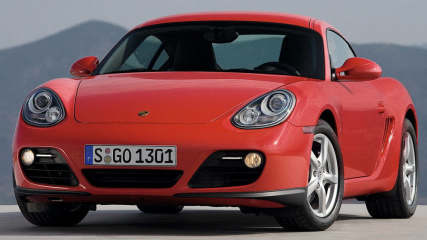
.jpg)
.jpg)

